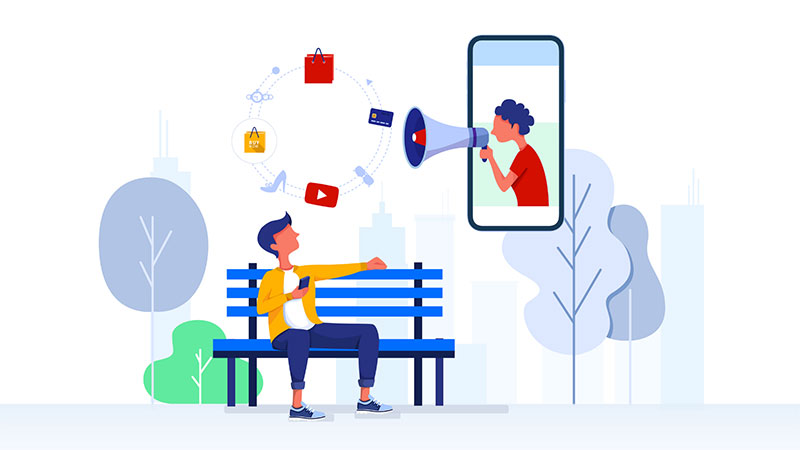Technology and digitization are together shaping our present and our future. No industry, organization, or individual is alien to these changes in the contemporary world.
This stands true for the education and learning sector as well. eLearning has emerged as a full-fledged industry in recent years and its power was especially underlined during the peak months of the COVID-19 pandemic.
Most of us turned to websites and apps during these times. Considering how powerful these tools are becoming, the trend will continue to grow in the coming years as well.
Now is the best time to acquire and retain a strong base of consumers and audiences for your learning app as people are intrigued and interested in this realm.
So, whether you own a learning app or are planning to launch one, go through the blog till the end and discover some helpful strategies for expanding your user base.
10 ways to build a strong audience base for our learning app
Let us dive right in and unravel the ten ultimate tips for popularizing a learning app:
1: Build an app that inspires & engages
A dull, poorly designed, and vanilla app with average features and aesthetics will not gain enough users, let alone retain them in the long run.
We understand that budget and other constraints like time and expertise can prohibit some businesses from investing in traditional custom app development agencies.
However, with several free iOS and Android app maker tools available in the market, this no longer remains a problem. Such DIY tools enable you to design your own app from scratch and publish it on the premium app stores without coding.
Users should land on the app to learn and not waste time figuring out how the app works and performs.
As you design your app, make sure that your app UI (User Interface) and UX (User Experience) align with the global standards and each element makes the user’s journey more intuitive and productive.
Let the app itself be simple yet interesting enough to engage and inspire users towards your desired goals. Use smart color palettes, design schemes, typography and more, to create a visually delightful and interactive experience altogether.
2: Determine your USP & niche
The term “Learning app” alone is not sufficient to define the specifics of an education app. The app should clearly define its purpose and must align to specific niches and goals.
Determining the USP and goals of your app will help you stay focused and add more value to your app. You need to seek answers to questions like:
- What is the goal and purpose of my app?
- What are the problems that my app can solve?
- Who are the people that the app is designed and meant for?
- What are the unique traits and characteristics of my app?
- What are the features and specifications of my app?
Finding answers to these questions will help you gain a smart and informed perspective, and you will be able to target the right people, on the right platforms, through the right channels.
3: Find where your audience is

Not every potential user of your app is sitting on your website or searching for your app on the app stores. In fact, the first step towards building a strong user base for your app is to know where the targeted users are present.
Users discover apps through various mediums and knowing about those mediums will help you identify what works best for you.
As per Think with Google, around 40% of smartphone users browse for apps in app stores. However, they can also learn about these apps while watching a YouTube video, reading an article on the internet, or just by surfing the web.
In fact, in most cases, word of mouth is the biggest advertisement and publicity source as more people are likely to learn about an app through their friends and family. Thus, referrals and other motivations to “share the app” can help you a great deal.
The netizens can also discover apps through other sources like social media mentions and ads, install ads on other websites and apps, recommendations on app stores, and more.
It widely depends on the fact that how and where your app is visible and accessible to the potential users and how you leverage each platform in your favor.
Having this understanding will help you channelize your acquisition and retention efforts in the right direction and enable you to get the maximum output.
You can use the WordPress survey plugin to collect feedback from your audience.
4: Create researched user personas
Anticipate and assess the persona of your potential users and win them over with ease.
Creating user personas is one of the best ways to understand your potential audience and acquire them without much friction.
User personas are semi-fictional representations of your target audience. These archetypes are created to help gain and propagate the understanding of ‘who the app is being created for and what are their preferences.’
Conduct ample research and learn about your user’s behavior, nature, demographics, techno graphics, psychographics, and more. It will help you delve deep into your potential audience’s mind and make better decisions.
Stepping into their shoes will enable you to make customer-centric decisions at various steps and eventually strengthen your consumer base.
5: Endorse app on your website
The existing customers and regular website visitors are likely to turn into app users more easily.
Marketers all around the globe believe that retention is more beneficial when compared with an acquisition. Thus, endorsing the learning app on your website can help you turn such engaged and interested visitors into app-based consumers.
Add prominent links to app stores and inspire your visitors to download your mobile app. You can add these to your landing page, and other important pages as well.
You can also introduce app-only offers and highlight these benefits on the high-traffic acquiring pages of your website.
6: Create a multilingual experience
A language barrier can sometimes hinder your efforts and act as a big setback. In order to avoid this hazard, you can create a multilingual experience for your audience.
Most top brands are favoring ‘Glocalization’ were appealing to the local audience based on their preferences is as important as reaching out to consumers across the globe.
Having a multilingual website and app can be a big step in this direction. So, you can think beyond the English-speaking audience and create for others as well.
You can select the alternate languages based on your target audience and location and work accordingly. It will help you gain the trust and attention of your audiences easily and effortlessly.
7: Leverage social media channels
Most brands that are active in the contemporary world realize the potential and power of social media. However, only a few manage to leverage it to the maximum potential.
We are not saying that you should be active and present on all the platforms available out there. But harnessing the ones that align with your goals and agenda is what matters the most.
Also, each social media channel is unique, and thus has a unique brand voice on every such platform becomes mandatory.
While you can use social media marketing and branding tools to run ads and promotions, use your accounts and pages to build real and meaningful relationships.
Participate in moment marketing, ongoing discourses, and discussions, engage influencers, interact with your followers and other brands, and implement other such popular practices.
Set up a dedicated social media team and treat it with equal importance. After all, engaging, promoting, and listening are the three keys to strong business-consumer relationships and social media platforms can help you do it all.
8: Market on multiple channels
Marketing and promotion are important for any and every brand. Finding the right platforms and utilizing them to propagate your brand voice and messages is extremely important.
You can harness multiple channels, platforms, and methods like:
- Email marketing
- Social media ads
- Affiliate marketing
- Influencer marketing
- Paid partnerships
- Push notifications
- Referral marketing
- Content marketing
- Install app ads
- Google ads
Divide your journey into pre-app launch, app launch, and post-app launch phases and pick your strategies and platforms accordingly.
Create an extensive hype and buzz about your app and keep your audience engaged from the very start. You can also involve them by organizing online events, contests, and more.
9: Collect data & feedback for analysis
Understanding your audience’s feedback and sentiment is critical for retaining them and acquiring new ones.
Therefore, be at your A-game when it comes to monitoring and analyzing various metrics that define your users’ experiences as well as your strengths and weaknesses.
This could be anything from traffic volume to the revenue generated through a campaign. Compile all the data and analyze it to make new business decisions and update the strategies that aren’t working.
Besides empirical data, you can also pay heed to reviews, ratings, feedback, social media mentions and comments, and more.
Frame and formulate new ideas accordingly and do not forget to test the changes and updates before final implementations.
10: Offer immediate & matchless support
This is one of the most significant steps when it comes to acquiring and retaining an audience.
Most brands make the mistake of thinking that support begins when a ticket or complaint is logged in by a user. This is not the right approach, and many brands are now redefining and updating it.
We often land on websites and apps where chat agents (or even automated chatbots) greet us immediately upon launch.
You can offer similar assistance and support and help incoming users move ahead in the right direction. It will enable you to capture leads and convert them into sales opportunities.
Having chat software and a robust support system will also help you address grievances faster and close more deals. It will pace your consumer resolutions and your users will likely be happier and more content.
Wrapping up!
These were the ten powerful and promising strategies that can attract more consumers to your LMS or learning app and keep it trending.
You can conduct your own research and then implement the above-listed suggestions for a holistic approach towards success.
Do not forget to audit and upgrade your strategies from time to time, to adapt and align your e-learning brand as per the latest trends of the industry.
Digital mediums are the future of education and learning, and you can make the most of this industry with the right infrastructure and strategy.
So, get, set, educate, and grow!
